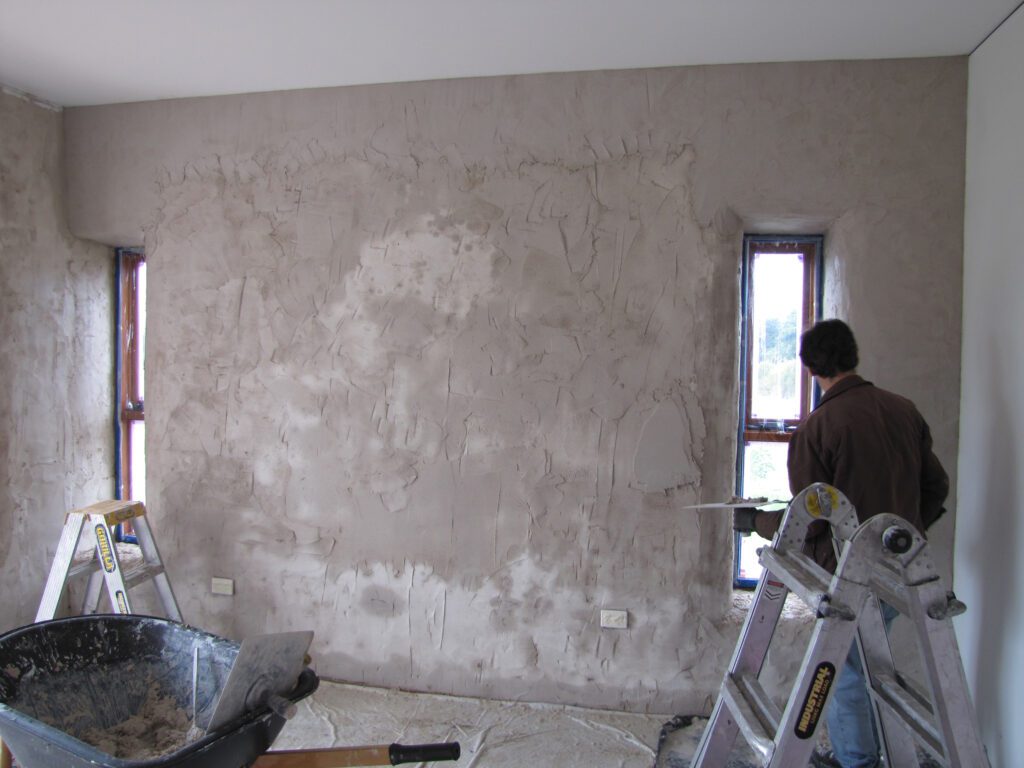Discover why a quality plastering trowel can make or break your next plastering project – insights from Kent’s master craftsmen.
For professional plasterers in Kent and across the UK, a plastering trowel isn’t just another item in their toolkit – it’s the cornerstone of quality workmanship. With over two decades of experience serving Tunbridge Wells and surrounding areas, we’ve learned that the difference between a good finish and an exceptional one often comes down to this essential tool.
Understanding the Anatomy of a Professional Plastering Trowel
A professional plastering trowel is a precision instrument that combines durability with finesse. The latest market research shows that over 85% of professional plasterers prefer high-grade stainless steel trowels for their superior performance and longevity. Understanding each component is crucial for selecting the right tool for your specific needs.
Blade Construction and Materials
- Stainless Steel Blades: Premium grade, rust-resistant material that maintains its shape and edge
- Chrome-Plated Options: Offers enhanced durability and smooth finishing capabilities
- Blade Thickness: Typically ranges from 0.5mm to 0.7mm for optimal flexibility
- Edge Treatment: Precision-ground edges for clean application and superior feathering
Handle Design and Ergonomics
The handle of a plastering trowel is where craftsmanship meets comfort. Modern ergonomic designs have revolutionised how professionals work, with studies showing a 40% reduction in hand fatigue when using soft-grip handles. The best handles feature dual-material construction, combining rigid core support with cushioned exterior grips.
Choosing the Right Trowel Size for Different Projects
Size selection can dramatically impact your plastering efficiency and finish quality. Our experience at Kent Plasterers has shown that matching the right trowel size to your project is crucial for achieving professional results. The trend in 2024 shows an increasing preference for versatile 14-inch trowels, which offer an optimal balance between coverage and control.
Standard Sizes and Their Applications
- 11-inch Trowels: Ideal for small repairs and detail work
- 14-inch Trowels: Perfect for general purpose plastering and medium-sized walls
- 16-inch Trowels: Best for large wall surfaces and commercial projects
- 20-inch Trowels: Specialist tools for large-scale commercial applications
Specialty Trowels for Specific Jobs
Different plastering tasks require specialised tools. Pool trowels, with their curved edges, are essential for curved surfaces, while finishing trowels with their finer edges create that perfect final coat. Recent industry data indicates a 30% increase in the use of specialised trowels for specific applications.
Professional Techniques with Your Plastering Trowel
Mastering trowel techniques is what separates amateur work from professional results. In our training programmes at Kent Plasterers, we emphasise that proper technique accounts for 70% of the final finish quality. The key lies in understanding pressure control and movement patterns.
Basic Movements and Pressure Control
- Sweeping Arc Movements: Essential for even application
- Consistent Pressure: Maintain steady force for uniform thickness
- Edge Control: Master the art of feathering edges
- Trowel Angle: Keep 15-20 degrees for optimal application
Advanced Finishing Methods
Professional finishing requires a combination of skill and the right tool manipulation. Our expert plasterers use advanced techniques like double-trowelling and cross-hatching to achieve that signature smooth finish that Kent Plasterers is known for throughout Tunbridge Wells.
Maintaining Your Professional Plastering Trowel
Proper maintenance can extend your trowel’s life by up to 300%. Our workshop data shows that well-maintained trowels last 4-5 times longer than poorly maintained ones. Regular care is essential for maintaining the tool’s performance and reliability.
Daily Cleaning and Storage
- Clean immediately after use with warm water
- Use a wire brush for stubborn plaster
- Apply light oil to prevent rust
- Store in a dry place, preferably hanging
Signs It’s Time to Replace Your Trowel
Knowing when to replace your trowel is crucial for maintaining professional standards. Look for signs like blade warping, edge damage, or handle looseness. According to our records, professional plasterers typically replace their main trowel every 18-24 months with heavy use.
Making the Right Investment in Your Plastering Trowel
Investing in quality tools is essential for professional results. Our experience shows that premium trowels, while 40-50% more expensive initially, provide better value over their lifetime through superior performance and longevity.
Cost vs. Quality Considerations
- Entry-level trowels: £15-£25 (suitable for DIY)
- Mid-range professional: £30-£50 (good for regular use)
- Premium professional: £60-£100 (ideal for daily commercial use)
- Specialist trowels: £80-£150 (for specific applications)
Top Professional Recommendations
Based on our extensive experience in Kent’s plastering industry, we recommend investing in a high-quality 14-inch stainless steel trowel with an ergonomic handle for general work. For specialists, maintaining a selection of task-specific trowels is essential for delivering the exceptional results our clients expect.
FAQ
Why does plaster tiger stripe?
Tiger lines are those little ripples you get on the wall after plastering up and down. ⬆️⬇️ So, how do you get rid of them? The key is to work in the opposite direction! If you plastered up and down, go crossways.
How to avoid trowel marks when plastering?
Avoiding Edge Marks (Tramlines) When used straight away, especially during the final stages of a skim coat, these sharp edges can easily catch or dig into the plaster, leaving fine lines or marks. Breaking in the trowel rounds off the corners ever so slightly, reducing this risk.
How many times should you trowel plaster?
How many coats of plaster do you need to plaster a wall? You should prepare to apply at least two coats, in order to achieve a smooth finish. However, if you can still see obvious grooves and indents after the second coat dries, you can trowel on a third coat using the method mentioned in Step 7 of this guide.
Sources
[1] https://marshalltown.com/pro-3937-plastering-trowels
[2] https://www.youtube.com/watch?v=0Xy5gd_G_Hw
[3] https://goldblattusa.com/product/soft-grip-plaster-trowel/

